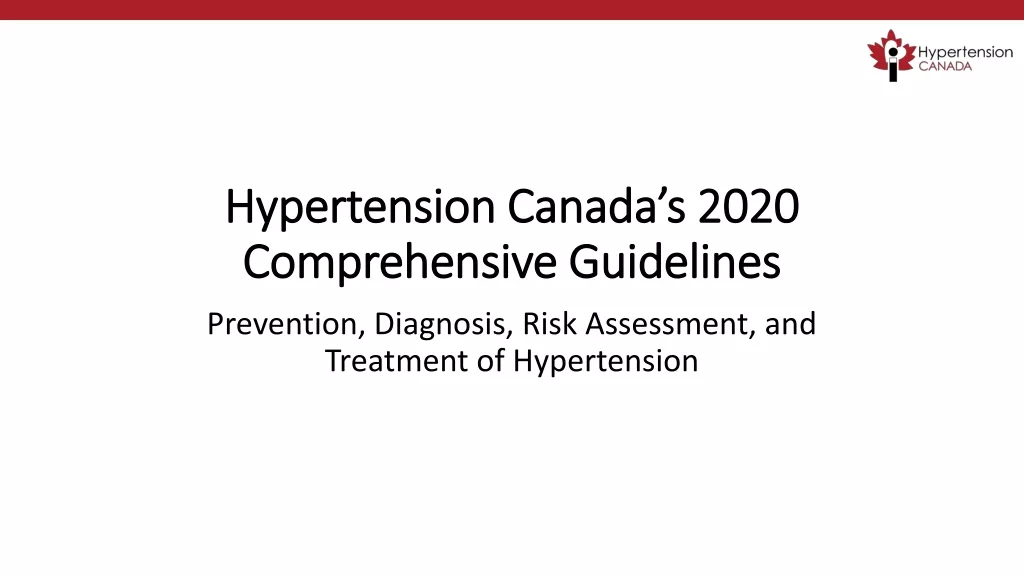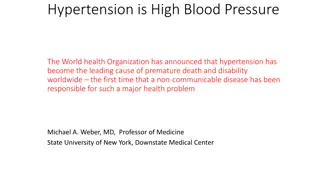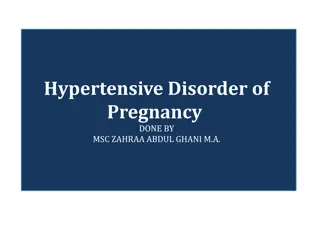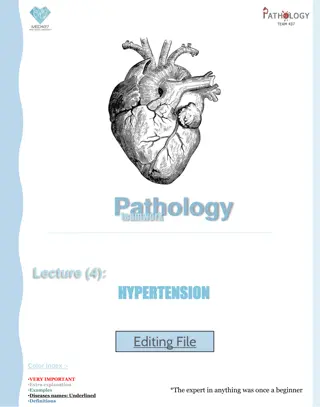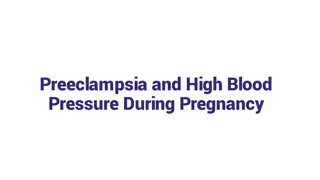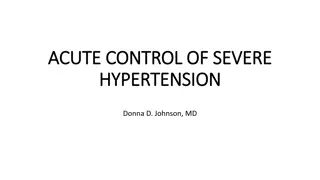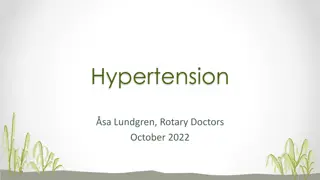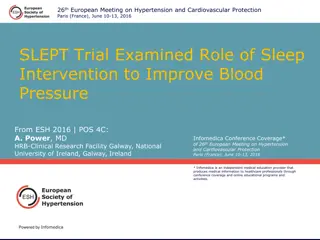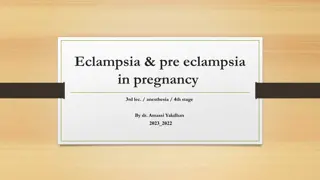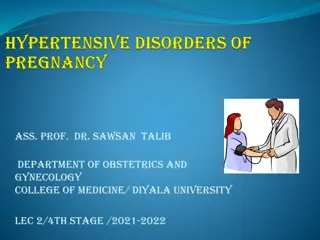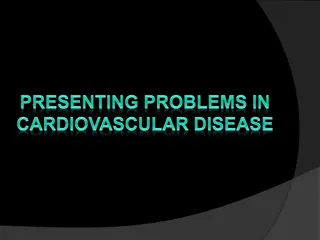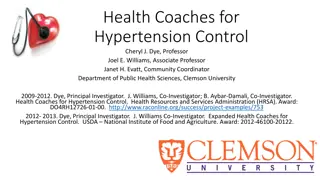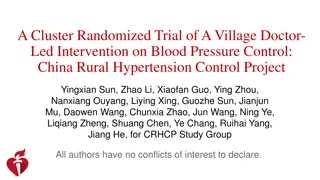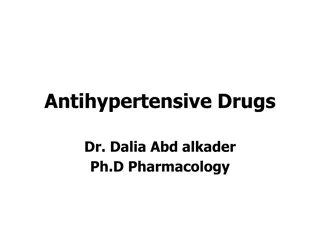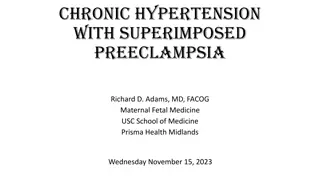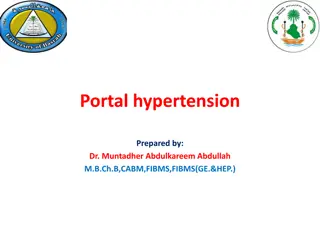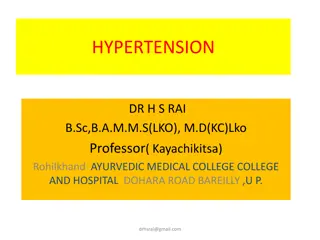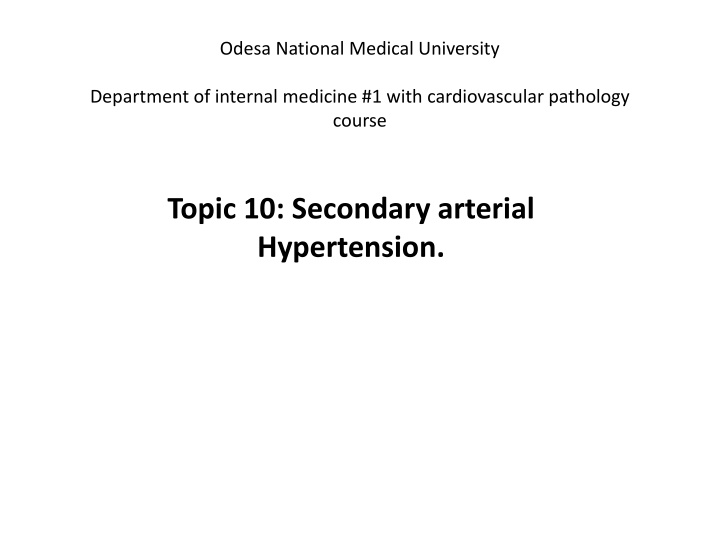
Secondary Arterial Hypertension in Cardiovascular Pathology
Explore the clinical clues, differences between essential and secondary hypertension, causes of secondary hypertension, and mechanisms of renal parenchymal disease and renovascular hypertension in the context of secondary arterial hypertension. Learn about the presentation and treatment options for renal parenchymal disease and renovascular hypertension.
Download Presentation

Please find below an Image/Link to download the presentation.
The content on the website is provided AS IS for your information and personal use only. It may not be sold, licensed, or shared on other websites without obtaining consent from the author. If you encounter any issues during the download, it is possible that the publisher has removed the file from their server.
You are allowed to download the files provided on this website for personal or commercial use, subject to the condition that they are used lawfully. All files are the property of their respective owners.
The content on the website is provided AS IS for your information and personal use only. It may not be sold, licensed, or shared on other websites without obtaining consent from the author.
E N D
Presentation Transcript
Odesa National Medical University Department of internal medicine #1 with cardiovascular pathology course Topic 10: Secondary arterial Hypertension.
Secondary HTN Clinical Clues: Age - <20 or >50. Severity often Stage 2. Onset abrupt. Associated Signs/Symptoms. FH sporadic.
Essential vs. Secondary Essential 95%, Secondary 5%. Assess for historical clues. PE findings suggest 2 etiology. New onset < 30 y.o. or > 50 y.o. . Poor control despite multiple meds. Sudden change in stable HTN.
Causes of Secondary HTN Primary renal parenchymal disease. Renovascular hypertension. Pheochromocytoma. Primary Aldosteronism. Oral contraceptives.
Causes of Secondary HTN Coarctation of the Aorta. Hyperthyroidism. CNS disorders. Toxemia of pregnancy. Tobacco. Alcohol excess.
Renal Parenchymal Disease (2-4%) Mechanism: Salt and water retention ( intravascular volume). Renin/angiotensin mediated. HTN (most frequent complication): Vicious cycle. Most renal failure patients die from vascular complications. Treatment of hypertension delays ESRF.
Renal Parenchymal Disease Presentation: Elevated BUN. Elevated Creatinine. Treatment: ACE inhibitor. Lasix.
Renovascular Hypertension (1%) Mechanism - renin levels. Etiology: Vascular obstruction. Atherosclerotic plaque older males. Fibromuscular dysplasia young women. Arteritis.
Clinical Clues to RV HTN Onset < 30 w/o family history or recent onset > 55. Abdominal bruit. Accelerated or resistant HTN. Recurrent pulmonary edema. Coexisting vascular disease. Acute renal failure precipitated by antihypertensives (ACEI or Angiotensin II blockers).
Evaluation RV HTN Rapid sequence IVP Difference in kidney size by 1.5 cm. Captopril enhanced radionuclide renal scan. Renal Flow Scan. Use if renal failure or dye allergy. Renal arteriography. Selective renal vein renins.
Treatment of RV HTN ACE inhibitors: Not in bilateral renal stenosis or Unilateral renal stenosis with one kidney. Monitor renal function closely. Consider angioplasty. Consider surgery.
Pheochromocytoma (0.2%) Adrenal tumor: Medulla secretes NE and Epinephrine. Metabolized to metanephrine or VMA. May be familial. 90 % benign. 10 % multiple, ectopic, and malignant.
Clinical Presentation - Pheo Moderate - severe paroxysms of HTN: Headache. Palpitations. Sweating. Nausea, vomiting. Tachycardia. Weight loss. Hyperglycemia.
PE/Lab Pheo EKG LVH. UA proteinuria. 24 h urine for metanephrines. Adrenal CT or MRI. Arteriography.
Treatment for HTN 2 Pheo Medications: Combination of alpha and beta blockers. Phentolamine, phenoxybenzamine first, then beta blocker. Surgical excision.
Primary Aldosteronism Hyperaldosteronism leads to retention of Na+ and excretion of K+. Renin release is suppressed. Suggested if HTN & Unprovoked hypokalemia. Symptoms of hypokalemia.
Primary Aldosteronism Treatment: Don t use potassium wasting diuretics. Aldosterone blockade: Spironolactone. Amiloride. Surgery - Generally 2 adrenal adenoma (Conn s syndrome).
Cushing Syndrome (.1 %) Excessive corticosteroids pituitary or adrenal adenoma. History: Sexual dysfunction. Weakness. Backache.
Cushing Syndrome Physical Exam: Plethora, central obesity, hirsuitism, purple striae. Lab: Hyperglycemia. Polycythemia. Osteoporosis. Hypokalemia. Urine 17-ketosteroids. 11-hydroxysteroids.
Cushing Syndrome Diagnosis: 24 hour urine test for cortisol; <2750 nmol r/o Cushing s. Dexamethasone suppression test: give 1mg at bedtime. measure am serum cortisol level between 0700-1000 hours.
Coarctation of the Aorta Congenital narrowing of thoracic aorta generally distal to L subclavian: perfusion of kidneys. renin, Na+, H2O retention.
Coarctation of the Aorta Presentation: Young patient with HTN UE but not LE RA pressure > LA + Claudication Systolic murmur CXR rib notching 3 sign
Coarctation of the Aorta Diagnosis: Aortography Treatment: Surgery

